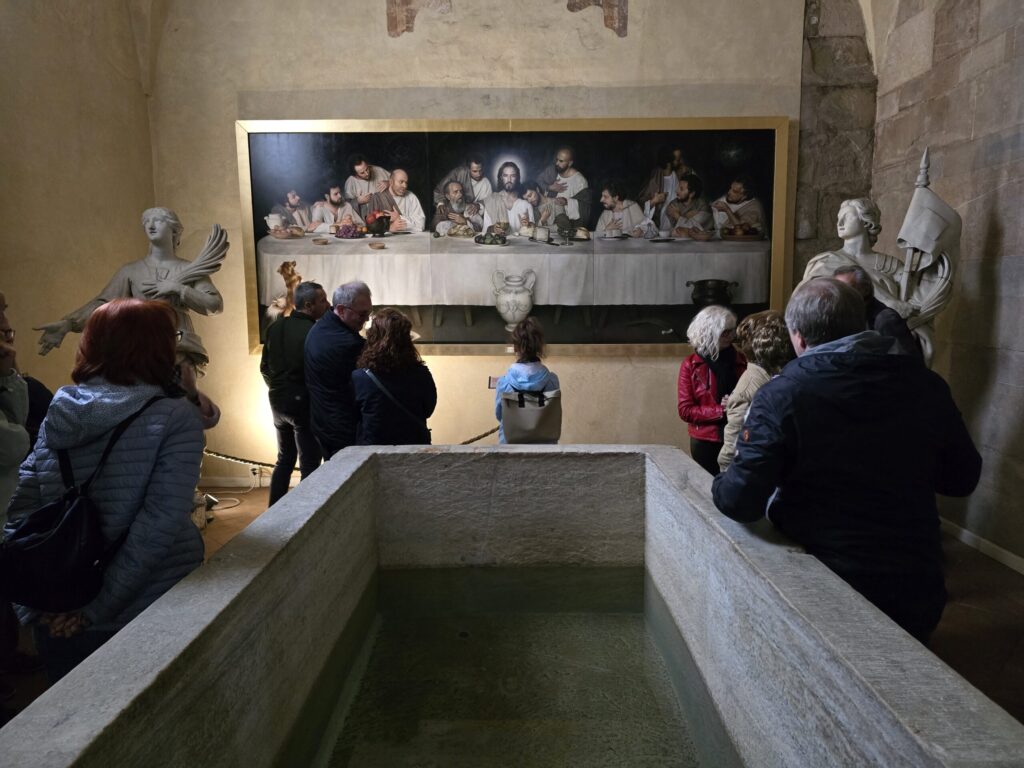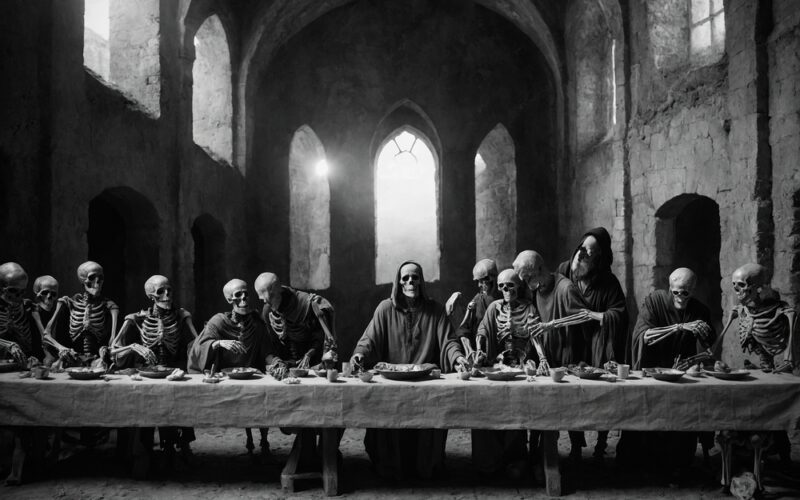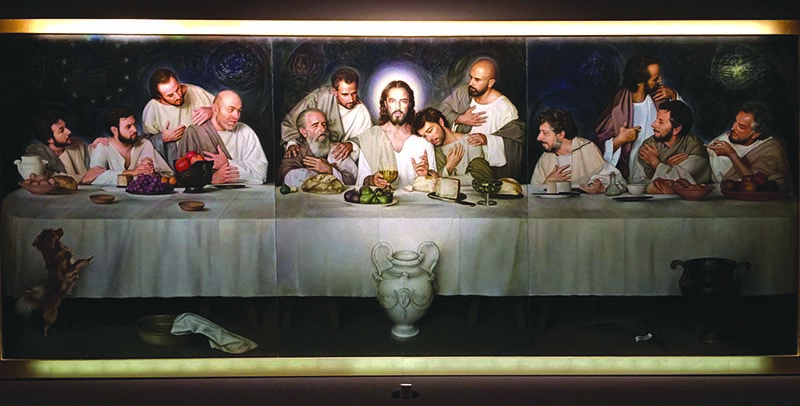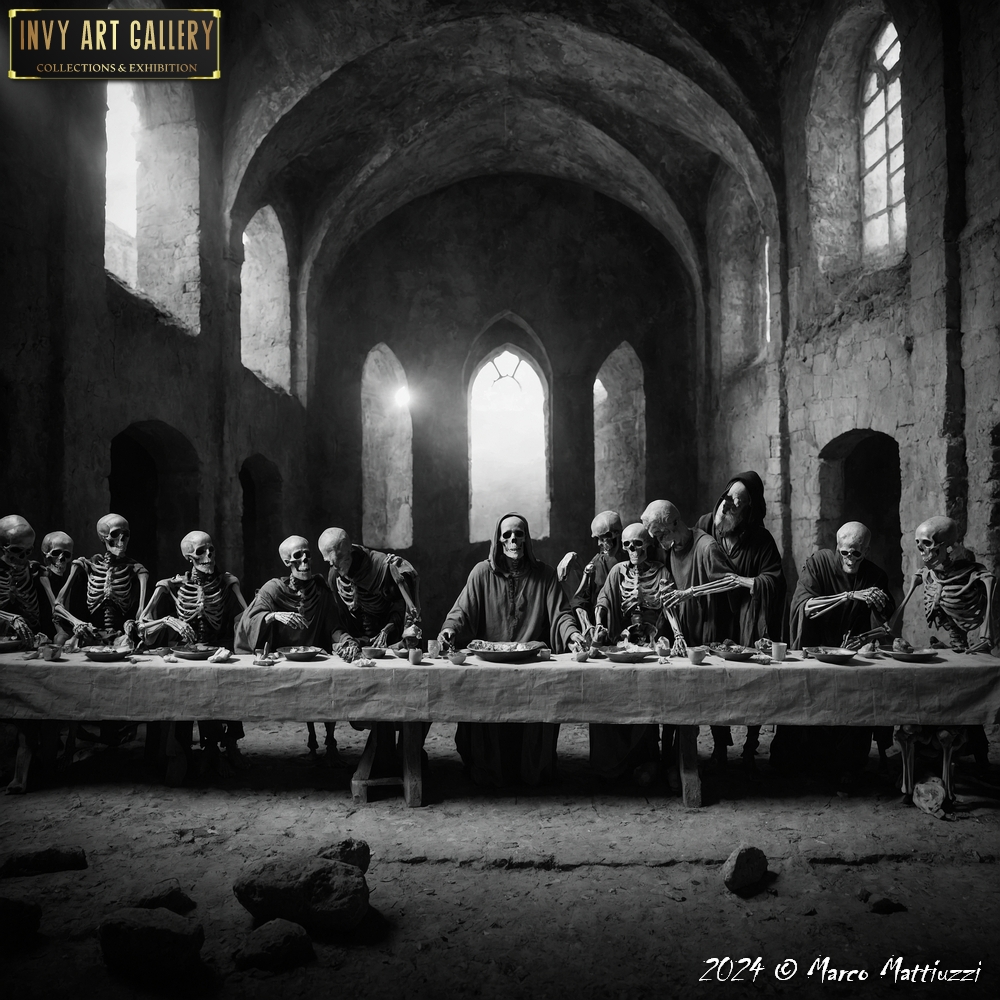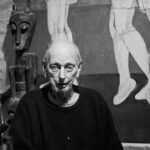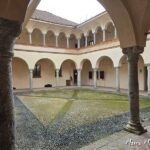During a recent trip to Piacenza, organized by the Friends of the Museums of Vercelli, I came across Ulisse Sartini’s rendition of The Last Supper, set within the sacred context of the Cathedral. The painting commands attention with its hyperrealistic fidelity, seemingly capturing reality in an eternal pause, where every detail fights to assert its material existence. However, this visual encounter did not mirror in me the widespread admiration that often accompanies such virtuosic works. In my reflection, hyperrealism revealed itself as a demonstration of technical skill, a display of precision that detaches from the religious and conceptual depth of the depicted event, masterfully evoked, for example, in Leonardo da Vinci’s Last Supper.
In response to these feelings, I created my own version of The Last Supper, born from a 3D rendering and carefully reworked in Photoshop. In my interpretation, Jesus and the apostles are replaced by skeletons, symbols of an original message that has been lost over time and memory. My image seeks to evoke the death of Jesus’ authentic teachings, a sort of desiccation of the soul that has now become the eternal stillness of bones.
My work, therefore, emerges as a critical counterpoint to Ulisse Sartini’s hyperrealism, an artistic genre that, despite its incredible ability to replicate reality, risks losing touch with the transcendental dimension that sacred art is duty-bound to explore. While aesthetic precision can generate admiration, it is in the language of symbols and personal interpretation that the power of art to shake souls and provoke introspection resides.
This digital creation of mine does not just aspire to be an alternative representation of The Last Supper, but aims to stimulate the viewer towards a more intimate and profound reflection on the ephemeral nature of human existence and the gradual erosion of deep meanings in the contemporary era. Art should not only imitate life; it must also, and perhaps most importantly, seek to give meaning to our existence, illuminating the shadows that science cannot reach.
Comparing these two visions of The Last Supper, Sartini’s and mine, a discussion emerges on the very nature of art: is it enough for an image to astonish the eye, or do we need works that speak directly to the soul? This is the dialogue I hope to initiate, a dialogue that can encourage observers to search deeply for the true spiritual nourishment that The Last Supper symbolizes.
